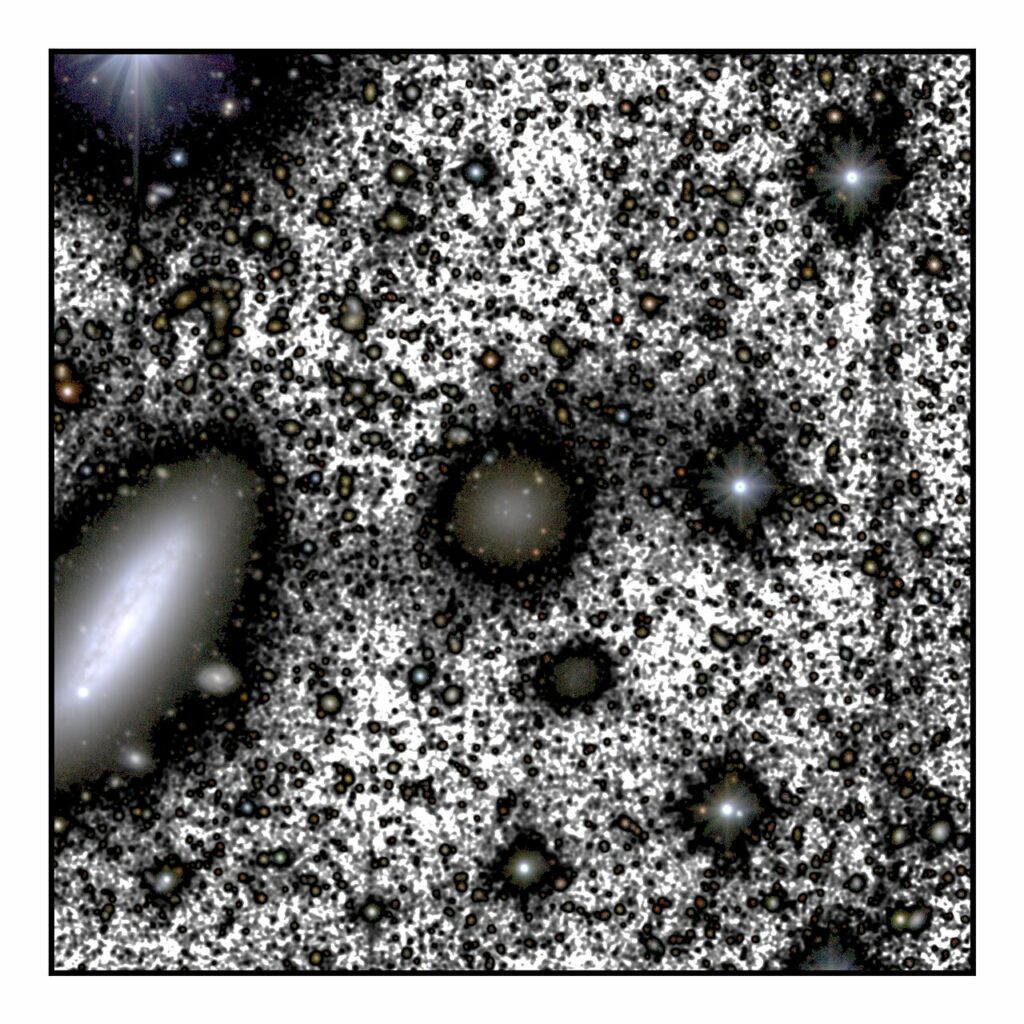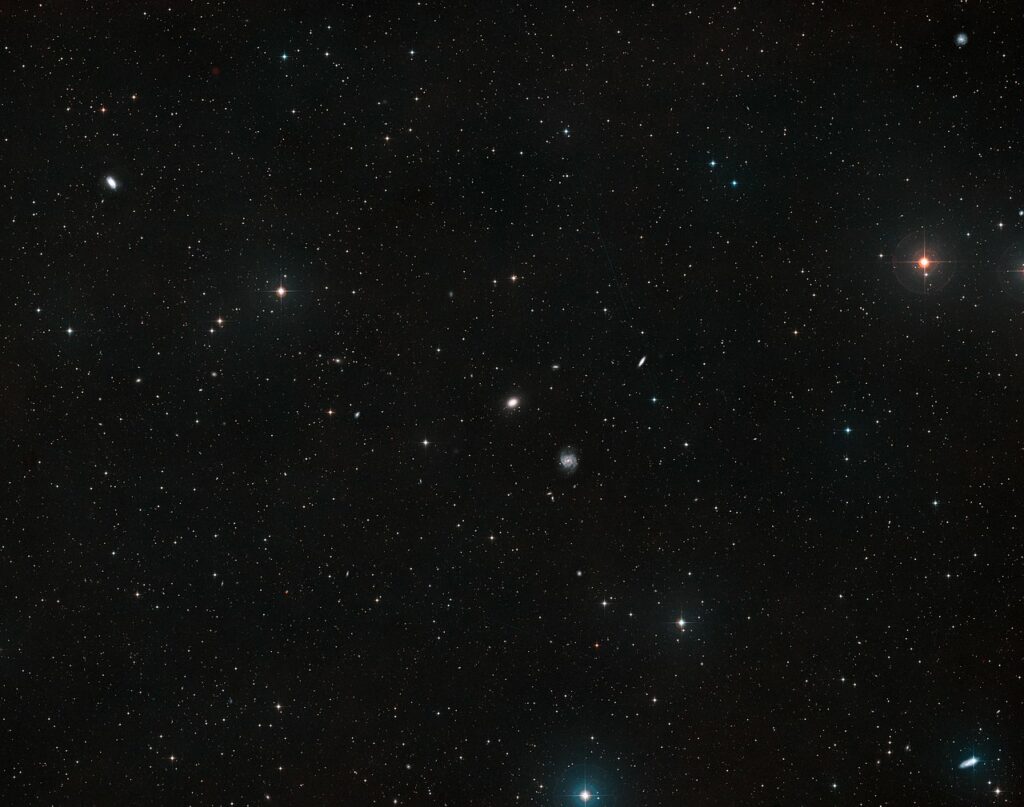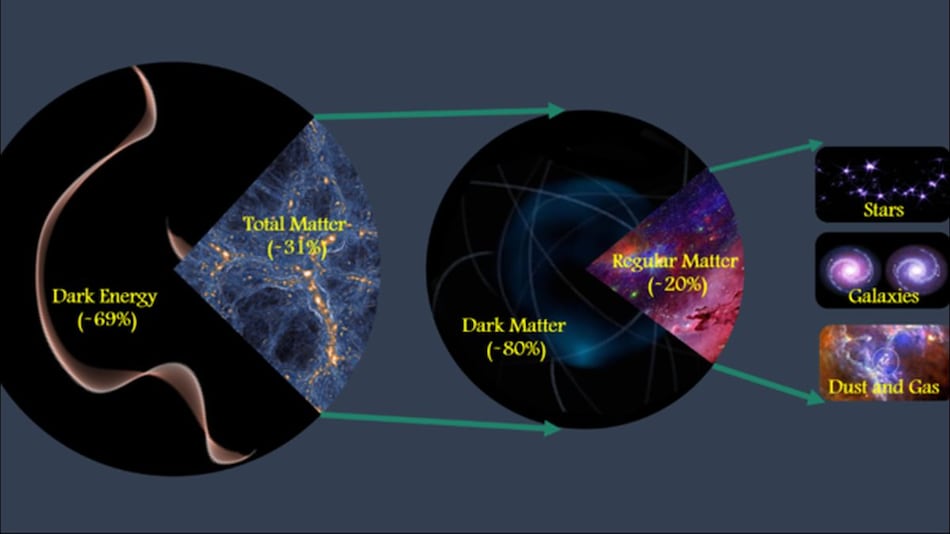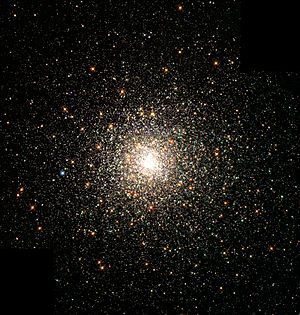Interactions with neighbouring galaxies could strip dark matter content, new observations of the ultra-diffuse galaxy (UDG) NGC 1052-DF4 made by the Hubble Space Telescope have revealed.
Upon its discovery in 2019, NGC 1052-DF4–located 45 million light-years from Earth–caused something of a stir amongst astronomers, as it was the second galaxy researchers had found that appeared to possess little to no dark matter. Now, new data collected by the Hubble Space Telescope gives researchers a clue as to why that may be the case.

An international team of astronomers have discovered evidence of a tidal disruption in the galaxy by studying its light and the distribution of its globular clusters. These two lines of evidence suggest to the team that NGC 1052-DF4 has been disturbed by a neighbouring galaxy with the gravitational interaction stripping the former of its dark matter.
“We used Hubble in two ways to discover that NGC 1052-DF4 is experiencing an interaction,” says team leader Mireia Montes, the University of New South Wales, Australia. “This includes studying the galaxy’s light and the galaxy’s distribution of globular clusters.”

Hubble was aided in the study of NGC 1052-DF4 by two Earth-based telescopes — the 10.4-metre Gran Telescopio Canarias (GTC) telescope and the IAC80 telescope, both located in the Canaries, Spain.
The observations collected by the trio of telescopes have revealed that the strong gravitational influence of neighbouring galaxy NGC 1035 is ripping NGC 1052-DF4 apart and that this process has begun to deplete the UDG’s dark matter content.
A Relief for Physicists
Until the 2018 discovery of NGC 1052-DF2 —the first UDG found with little to no dark matter—this mysterious substance had been considered a key constituent of the structure of galaxies. Thus, finding a galaxy in which dark matter–matter not made up of electrons, protons, or neutrons– was mostly absent didn’t just come as a shock to astronomers, it also sparked a heated debate about this non-baryonic matter which accounts for about 80-90% of the Universe’s total matter content.
Such discussions were only intensified by the discovery of a second ‘dark matter lite’ UDG — NGC1052-DF4, the galaxy this new research concerns— in 2019.

“It is not enough just to spend a lot of time observing the object, but a careful treatment of the data is vital,” explains Raúl Infante-Sainz of the Instituto de Astrofísica de Canarias, Spain, who helped collect the team’s data. “It was therefore important that we use not just one telescope/instrument, but several (both ground- and space-based) to conduct this research. With the high resolution of Hubble, we can identify the globular clusters, and then with GTC photometry we obtain the physical properties.”
This is the first time that astronomers have been able to determine that dark matter can be removed from a galaxy in this way, and finding such a stripping mechanism will likely come as a relief to many scientists who had feared that finding galaxies lacking dark matter would spark a major revision to existing theories of gravity.
This realisation was only possible because of the deep optical imaging allowed by Hubble’s high resolution allowing the astronomers to properly identify and study globular clusters within NGC 1052-DF4.
Tracing Galactic History with Globular Clusters
The fact that globular cluster — which are thought to develop during periods of intense star formation — are compact and very luminous makes them fairly easy to observe. Studying the characteristics of these clusters such as their spatial distribution gives researchers a very good indication of the properties of their host galaxy, its history, and its current state.

With NGC 1052-DF4 the alignment of its globular clusters indicates they are currently been stripped from the galaxy — good evidence of tidal disruption. Further evidence of this event was discovered in the UDG’s light profile.
In the light from NGC 1052-DF4, the astronomers discovered threads of material being dragged away from the galaxy. These ‘tidal-tails’ only consist of around 7% of the galaxy’s stellar material, thus indicating that as of yet the central parts of this galaxy have yet to be affected by the interaction with NGC 1035.
Though the tidal disruption has primarily effected the galaxy’s less concentrated dark matter content thus far, the researchers believe that eventually not only will the disturbance spread to the central regions but can already see clear signs that it has begun to pull on NGC 1052-DF4’s outer stars.
“This result is a good indicator that, while the dark matter of the galaxy was evaporated from the system, the stars are only now starting to suffer the disruption mechanism,” says Ignacio Trujillo of the Instituto de Astrofísica de Canarias in Spain. “In time, NGC1052-DF4 will be cannibalised by the large system around NGC1035, with at least some of their stars floating free in deep space.”






